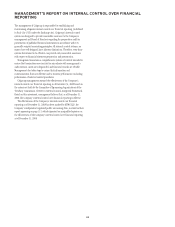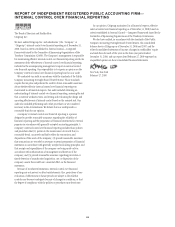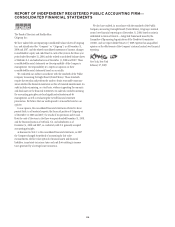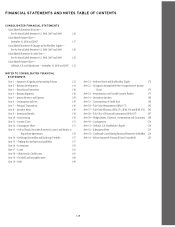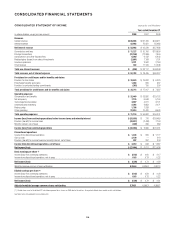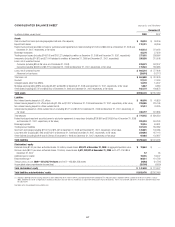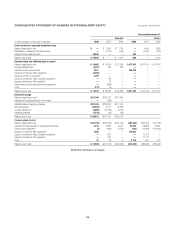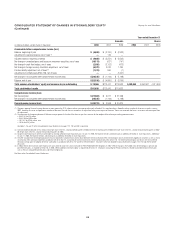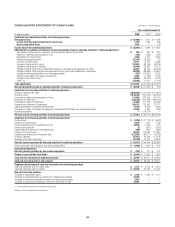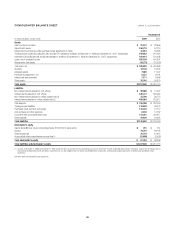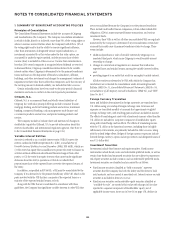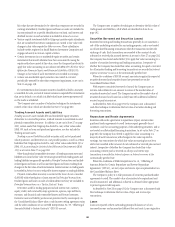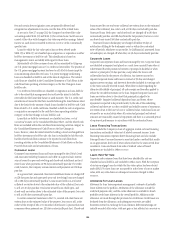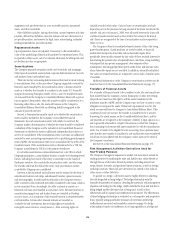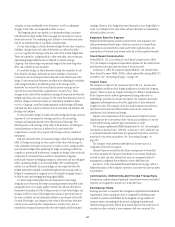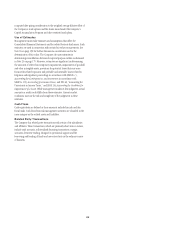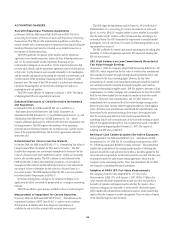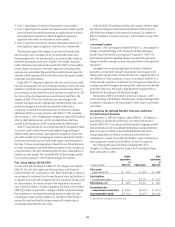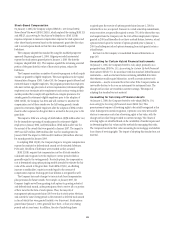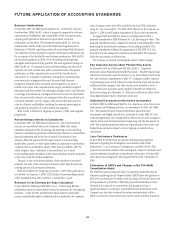Citibank 2008 Annual Report Download - page 128
Download and view the complete annual report
Please find page 128 of the 2008 Citibank annual report below. You can navigate through the pages in the report by either clicking on the pages listed below, or by using the keyword search tool below to find specific information within the annual report.NOTES TO CONSOLIDATED FINANCIAL STATEMENTS
1. SUMMARY OF SIGNIFICANT ACCOUNTING POLICIES
Principles of Consolidation
The Consolidated Financial Statements include the accounts of Citigroup
and its subsidiaries (the Company). The Company consolidates subsidiaries
in which it holds, directly or indirectly, more than 50% of the voting rights or
where it exercises control. Entities where the Company holds 20% to 50% of
the voting rights and/or has the ability to exercise significant influence,
other than investments of designated venture capital subsidiaries, or
investments accounted for at fair value under the fair value option, are
accounted for under the equity method, and the pro rata share of their
income (loss) is included in Other revenue. Income from investments in
less than 20%-owned companies is recognized when dividends are received.
As discussed below, Citigroup consolidates entities deemed to be variable
interest entities when Citigroup is determined to be the primary beneficiary.
Gains and losses on the disposition of branches, subsidiaries, affiliates,
buildings, and other investments and charges for management’s estimate of
impairment in their value that is other than temporary, such that recovery of
the carrying amount is deemed unlikely, are included in Other revenue.
Certain reclassifications have been made to the prior-period’s financial
statements and notes to conform to the current period’s presentation.
Citibank, N.A.
Citibank, N.A. is a commercial bank and wholly owned subsidiary of
Citigroup Inc. Citibank’s principal offerings include consumer finance,
mortgage lending, and retail banking products and services; investment
banking, commercial banking, cash management, trade finance and
e-commerce products and services; and private banking products and
services.
The Company includes a balance sheet and statement of changes in
stockholder’s equity for Citibank, N.A. to provide information about this
entity to shareholders and international regulatory agencies. (See Note 31
to the Consolidated Financial Statements on page 214.)
Variable Interest Entities
An entity is referred to as a variable interest entity (VIE) if it meets the
criteria outlined in FASB Interpretation No. 46(R), Consolidation of
Variable Interest Entities (revised December 2003) FIN 46(R), which are:
(1) the entity has equity that is insufficient to permit the entity to finance its
activities without additional subordinated financial support from other
parties, or (2) the entity has equity investors that cannot make significant
decisions about the entity’s operations or that do not absorb their
proportionate share of the expected losses or receive the expected returns of
the entity.
In addition, as specified in FIN 46(R), a VIE must be consolidated by the
Company if it is deemed to be the primary beneficiary of the VIE, which is the
party involved with the VIE that has a majority of the expected losses or a
majority of the expected residual returns or both.
Along with the VIEs that are consolidated in accordance with these
guidelines, the Company has significant variable interests in other VIEs that
are not consolidated because the Company is not the primary beneficiary.
These include multi-seller finance companies, certain collateralized debt
obligations (CDOs), many structured finance transactions, and various
investment funds.
However, these VIEs as well as all other unconsolidated VIEs are regularly
monitored by the Company to determine if any reconsideration events have
occurred that could cause its primary beneficiary status to change. These
events include:
• additional purchases or sales of variable interests by Citigroup or an
unrelated third party, which cause Citigroup’s overall variable interest
ownership to change;
• changes in contractual arrangements in a manner that reallocates
expected losses and residual returns among the variable interest holders;
and
• providing support to an entity that results in an implicit variable interest.
All other entities not deemed to be VIEs with which the Company has
involvement are evaluated for consolidation under Accounting Research
Bulletin (ARB) No. 51, Consolidated Financial Statements, SFAS No. 94,
Consolidation of All Majority-Owned Subsidiaries (SFAS 94), and “EITF
Issue No. 04-5.”
Foreign Currency Translation
Assets and liabilities denominated in foreign currencies are translated into
U.S. dollars using year-end spot foreign exchange rates. Revenues and
expenses are translated monthly at amounts that approximate weighted
average exchange rates, with resulting gains and losses included in income.
The effects of translating net assets with a functional currency other than the
U.S. dollar are included in a separate component of stockholders’ equity
along with related hedge and tax effects. The effects of translating income
with the U.S. dollar as the functional currency, including those in highly
inflationary environments, are primarily included in Other revenue along
with the related hedge effects. Hedges of foreign currency exposures include
forward foreign currency, option and swap contracts and designated issues of
non-U.S. dollar debt.
Investment Securities
Investments include fixed income and equity securities. Fixed income
instruments include bonds, notes and redeemable preferred stocks, as well as
certain loan-backed and structured securities that are subject to prepayment
risk. Equity securities include common and nonredeemable preferred stocks.
Investment securities are classified and accounted for as follows:
• Fixed income securities classified as “held to maturity” represent
securities that the Company has both the ability and the intent to hold
until maturity, and are carried at amortized cost. Interest income on such
securities is included in Interest revenue.
• Fixed income securities and marketable equity securities classified as
“available-for-sale” are carried at fair value with changes in fair value
reported in a separate component of Stockholders’ equity, net of
applicable income taxes. As set out in Note 16 on page 158, declines in
122


